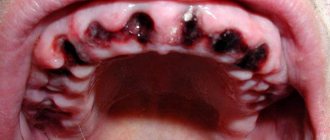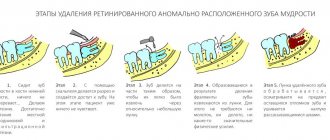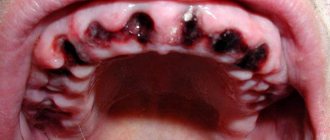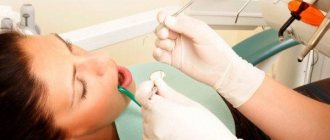The article was checked by a cardiologist, member of the European Society of Cardiology, the Eurasian Association of Cardiologists, the Russian Society of Holter Monitoring O.A. Lozbineva. , is for general informational purposes only and does not replace specialist advice. For recommendations on diagnosis and treatment, consultation with a doctor is necessary.
Edema is the medical term for the abnormal accumulation of fluid in certain tissues of the body. Parts of the body swell from injury or inflammation. Medicines, pregnancy and infections can also cause swelling. Fluid accumulation occurs when it is released from small blood vessels into nearby tissues.
Fluid accumulation may occur under the skin, usually in the lower extremities or lungs. The localization area can give the practitioner the first clues as to the main cause of the development of the pathological process in the body.
sign up for a consultation
Types of edema
Depends on origin:
- Lymphatic - those types of edema that are caused by causes and changes associated with the lymphatic system are considered as such. Among them are primary (there are congenital malformations of the lymphatic system, usually affecting the limbs), or secondary (there are acquired damage). The latter may be the result of operations to remove tumors in the lymphatic system, or in cases of burns, strokes or infections that cause vessel destruction.
- Dynamic - the lymphatic system does not show any changes, but excess fluid is felt. These include swelling of the veins caused by blood clots or problems with the blood vessels caused by strokes, inflammation, and medications. In women, the cause is varicose veins and exposure to hormones during pregnancy and the postpartum period.
The main factors are changes in the biochemical composition of tissue fluid and blood plasma. Disturbances also occur against the background of hormonal changes and increased capillary permeability.
What can lead to severe swelling
Some diseases and complications lead to similar non-standard reactions of the body to tooth extraction. Let's look at them in more detail:
- Systemic chronic diseases. These include diabetes, hypertension, cardiovascular diseases, and low immunity. All these diseases impair the body’s ability to recover after surgical procedures.
- Alveolitis is an inflammation of the alveolus (socket) that remains after tooth extraction. The cause of inflammation can be general diseases, smoking, mechanical damage, or non-compliance with doctor’s recommendations. As a result, a blood clot does not form in the socket, severe pain, a gray coating and an unpleasant odor occur. If alveolitis is not cured in time, dangerous purulent diseases such as phlegmon and osteomyelitis may develop.
- Difficult tooth extraction. The presence of dental anomalies associated with incorrect tooth position (dystopia, retention) almost always complicates the extraction process. Often these deviations lead to greater trauma and, as a result, more pronounced swelling. The same can be said for third molar extractions. If the operation was performed professionally and the patient followed the dentist’s instructions, then there is no reason to worry.
- Incorrect tooth extraction. Doctor's mistakes include: incomplete root removal, removal of the interradicular septum, leaving fragments in the alveolus, infection. A more rare cause of inflammation is the presence of a cyst that was not detected during surgery: its growth is accompanied by an increase in edema.
To speed up healing and eliminate any unpleasant symptoms that may arise, do not delay your visit to the dentist. It is advisable to contact the surgeon who performed the tooth extraction procedure.
Reasons for development
The veins in the legs have valves that act as "check valves" to prevent blood from flowing into the legs due to gravity. The heartbeat pushes blood through the arteries down to the legs. The blood must return to the heart to be recirculated through the veins. Blood pressure through the system and contracting leg muscles push blood up the veins, while valves prevent backflow down against gravity.
Valve insufficiency allows blood to pool in the legs and feet, eventually leading to swelling. When blood stagnates or pools in an area, fluid leaks into the surrounding tissue.
Valve insufficiency can occur for the following reasons:
- with age;
- from standing for long periods of time;
- from sitting for many hours;
- from varicose veins.
Regardless of the cause, as the valves in the legs become dysfunctional, blood pools and causes swelling, which puts pressure on the veins, causing them to widen and widen. This prevents the valves from working effectively, leading to even more swelling.
Main reasons for development:
- kidney diseases: glomerulonephritis, nephrotic syndrome, renal failure;
- heart diseases: heart failure;
- vein lesions (varicose veins, inflammation, thrombosis);
- liver diseases: cirrhosis of the liver, blockage of the hepatic veins;
- diseases of the endocrine system: hypothyroidism, diabetes;
- severe cancer;
- nutritional dystrophy;
- pregnancy;
- allergic reactions: insect bites, contact with an allergen.
Depending on the type, swelling can lead to retinal detachment, stroke, seizures, and even death. It is unacceptable to ignore the problem. To determine the cause, sign up for a consultation with specialists at the Yauza Hospital.
How to eliminate swelling
Almost all patients are interested in how to relieve swelling after implantation. During the normal course of the recovery period, tissue swelling does not need to be eliminated; it will go away on its own over time. To minimize the manifestations of edema, the following manipulations can be performed:
- Apply a cold compress immediately after the intervention;
- Stick to a diet - eat soft, non-irritating foods;
- Ensure adequate sleep and rest;
- When prescribed by a doctor, use anti-inflammatory and decongestant medications.
Edema as symptoms of diseases
In addition to vein problems, swelling can be caused by many other problems. In this case, clinical manifestations are usually observed on both legs.
Heart pathologies
When the heart begins to fail as a pump, fluid pools in areas such as the legs and lungs and causes swelling. In addition, less blood flows to the kidneys, causing fluid retention.
Lung diseases
The cause is acute pulmonary failure, which is associated with the release of transudate from the capillaries. This is fraught with infiltration of the alveoli and a sharp disruption of gas exchange in the lungs.
It manifests itself as shortness of breath at rest, suffocation, a feeling of tightness in the chest, cough with the release of foamy bloody sputum. Accompanied by the development of acidosis and hypoxia.
Kidney diseases
Excess fluid and sodium in the circulation can cause fluid to accumulate. Swelling associated with kidney disease usually occurs in the legs and around the eyes.
Damage to the tiny filtering blood vessels in the kidneys can lead to nephrotic syndrome. In nephrotic syndrome, decreased levels of protein (albumin) in the blood can lead to fluid accumulation.
Severe liver pathologies
With cirrhosis, as a rule, fluid accumulates in the abdominal cavity. Accompanied by liver failure, dilation of hemorrhoidal veins and bleeding from the esophagus.
Quincke's edema
An acute disease that is characterized by the appearance of limited angioedema of the skin and subcutaneous tissue, body systems and various organs. The reasons are autoimmune and infectious diseases, false and true allergies. It occurs acutely and goes away within 2-3 days.
Arthritis
During the inflammatory process in the joint area, a large amount of synovial fluid is released. It accumulates in the cavity of the articular structure. When inflammation spreads to adjacent soft tissues, extensive (spread) edema develops.
Review of medications that help relieve swelling
Medicines will help relieve swelling from the face after implantation. They can be used internally and externally.
Rinsing with antiseptics of synthetic or plant origin:
- Synthetic antiseptics : Chlorhexidine, Miramistin, Furacilin. Eliminates the risk of pus formation and abscess development. Rinsing is done every time after eating. In the first days they are replaced with oral baths. Keep the solution in your mouth for a minute and carefully spit it out. To prevent dry mouth, long-term use of Chlorhexidine is not recommended. Constantly rinsing with the drug can cause the development of candidiasis in the mouth.
- Herbal antiseptics include : chamomile, yarrow, calamus root, elecampane, oak bark. These plants have an anti-inflammatory effect and have astringent properties. An effective drug is Stomatofit, consisting of an extract of calamus rhizomes, oak bark, thyme, mint, and sage. It destroys many bacteria, candida fungus.
Ointments and gels eliminate swelling. The drugs are applied to the gum area, but they also act on swelling of the outer part of the face:
- Cholisal is a gel containing choline salicylate that prevents the synthesis of prostaglandins that cause swelling and has an antimicrobial effect. Applications soaked in gel are placed at the site of edema formation.
- Solcoseryl is an ointment that accelerates tissue regeneration. It is applied to the gum. Before use, the tooth is treated with a solution of hydrogen peroxide.
- Metrogyl-Denta is an antibacterial gel. Prevents the development of infection, relieves swelling.
- Kamistad is an anesthetic antiseptic gel containing lidocaine. When used, numbness occurs in the gums and tongue.
- Asepta is a propolis-based gel with an antiseptic and anti-inflammatory effect.
- Parodontocide is a gel containing phenyl salicylate, which suppresses the synthesis of prostaglandins that cause swelling.
To relieve swelling and relieve pain, medications for internal use are prescribed:
- nonsteroidal anti-inflammatory and painkillers (Nimesulide, Analgin, Voltaren, Ketanov);
- antibiotics (Flemoklav, Augmentin, Amoxiclav).
We treat all types of edema
Specialists at the Yauza Clinical Hospital diagnose and treat edema of various origins. We follow international protocols and use modern equipment.
For cardiovascular diseases
“Cardiac” edema develops slowly – over several weeks or months. They are characterized by symmetry and increase in size in the evening. They first appear on the lower extremities or lower abdomen, in severe cases they spread throughout the body and are accompanied by the accumulation of fluid in the abdominal cavity (ascites) and enlarged liver. In this case, the skin most often feels cold to the touch and the swelling is dense. When pressed, a hole remains.
Patients complain of shortness of breath, which worsens when lying down, and low exercise tolerance. They have wheezing in the lungs, tachycardia, pallor of the lips, and cyanosis of the nasolabial triangle. As circulatory failure is compensated, swelling decreases or disappears.
Swelling due to venous insufficiency also becomes more pronounced in the evening, causing the sensation of shoes suddenly becoming tight (due to swelling of the feet), and the legs become visually thicker, often not symmetrically. Swelling in the legs is accompanied by a feeling of heaviness, fatigue, and pain in the legs. Spider veins and an enhanced pattern of veins are noticeable on the skin. In severe cases, swelling persists constantly, cramps in the calves are possible, trophic changes develop - thinning of the skin, persistent redness, peeling, itching, and poorly healing ulcers. Timely professional medical care helps prevent or reduce the risk of such progression of the disease.
For kidney diseases
“Renal” edema can develop very quickly - in less than a day. Swelling appears mainly on the face. Swelling under the eyes is noticeable in the morning. They can also be localized on the limbs and abdominal wall. When changing postures, bodies quickly shift. Fluid accumulation often occurs - ascites or hydrothorax. Edema skin is soft or dense, pale, dry.
Swelling due to kidney disease may be accompanied by a decrease in the amount of urine excreted, a change in its color, and possibly the appearance of blood (red blood cells) and protein in a urine test. Pain appears in the lumbar region. Nonspecific manifestations include headache and weakness. Shortness of breath and liver enlargement, characteristic of circulatory failure, are not observed. Renal edema can be a consequence of an infectious disease (tonsillitis, viral infection, etc.) and requires observation and treatment by a specialist (nephrologist, rheumatologist, therapist).
Allergic
Allergic edema develops quickly (in a few minutes) and is regional in nature. They arise as a result of contact with an allergen or an insect bite. They develop most often on the face (eyes, eyelids, mucous membranes, lips), arms (fingers, hands), elbows and knees.
The development of allergic edema is accompanied by itching and rash. In severe cases, due to bronchospasm, attacks of difficulty breathing are possible, usually in the exhalation phase. Swelling of the larynx can lead to suffocation and pose a threat to the patient's life. Therefore, patients prone to such a reaction should be prepared for a dangerous situation.
It is necessary to discuss in advance with the doctor what medications will help the patient safely wait for the ambulance to arrive (delivery to the hospital) in case of an acute allergy attack and always have them available.
Prolonged swelling causes stretching of the skin, makes blood vessels less elastic, and impairs blood circulation. Swelling negatively affects the joints and causes difficulty moving. Ulcers may develop at the site of swelling, which are subsequently difficult to treat. Don't take things to the extreme. Make an appointment with a doctor and get rid of the problem.
How quickly does swelling go away and how many days does it last?
The appearance of a tumor is possible within a few hours after surgery. First it appears on the gum, after a day it spreads to the cheek and face. Usually lasts for several days without further growth. Healing of damaged tissue takes an average of a week. During this period, swelling persists.
The peak state , that is, the greatest development of inflammation, should be expected on the third postoperative day. Even a doctor cannot know how long the swelling will last. The specialist will give recommendations regarding the elimination of pain, the implementation of which will significantly facilitate the healing process.
If after 10 days your health does not improve, you should consult a doctor, as there is a risk of inflammation due to infection.
Diagnostic stages
Consultation and examination by a therapist. After a detailed conversation and medical examination, the patient can be referred for consultation to other specialists depending on the etiology of the disease: cardiologist, allergist, endocrinologist, nephrologist, urologist, etc.
Laboratory research. First of all, the following are carried out:
- general (with leukocyte formula) and biochemical blood tests;
- general urine analysis.
- Instrumental studies:
- ECG;
- echocardiography;
- Ultrasound of blood vessels of the lower extremities;
- X-ray of the chest organs.
Next, the doctor prescribes a set of studies on an individual basis in each individual case.
To effectively eliminate swelling, you need to know exactly what disease is causing it. Edema is not an independent disease, but a symptom. Diagnostics using modern equipment will allow us to determine the cause of the pathology. The information obtained allows the doctor to choose the most effective treatment. Don't put off taking care of your health until later. Schedule a consultation with your doctor today to stay energized for years to come.
sign up for a consultation
Complications that can occur along with swelling
When implanting an implant, the development of temporary complications that appear after surgery and are combined with swelling is considered the norm.
Early complications that do not pose a danger include:
- minor bruises;
- feeling of fullness in the maxillary sinus;
- slight increase in body temperature;
- seam divergence;
- inflammation of soft tissues in the area of implantation;
- painful sensations.
Early complications are not pathology, but standard signs that arise during any surgical intervention. Symptoms go away on their own or are treated by a doctor.
Treatment of swelling
Treatment of edema is carried out in accordance with the cause of its development. Here are some general recommendations:
- Limit fluid intake to 1.5 liters per day, and sometimes less.
- Reduce salt intake to 1–1.5 g per day.
- Diuretics should be taken only under the supervision of a doctor who monitors the patient’s condition and monitors the level of electrolytes in the blood. Diuretics can lead to a decrease in potassium levels in the body, so it is recommended to eat dried apricots, raisins, rice, baked potatoes and other foods rich in this trace element.
- For cardiovascular diseases, a cardiologist, after diagnosing “cardiac” edema, selects therapy to maintain a stable state of the vascular system. A patient with heart failure should visit a cardiologist regularly throughout his life. In case of venous insufficiency, conservative or surgical treatment is carried out by a vascular surgeon-phlebologist.
- If the swelling is caused by kidney disease, in addition to relieving the swelling, the doctor (therapist or nephrologist) prescribes therapy for the underlying disease, which may include antibiotics, anti-inflammatory hormonal drugs, etc.
- In case of allergic edema, which is accompanied by difficulty breathing, urgent medical attention is required. Before help is provided, you should take an antihistamine, if the condition is severe - prednisolone or dexamethasone. In case of an attack of suffocation of an allergic nature, take 1-2 breaths from an inhaler recommended by your doctor (allergist).
How can you reduce discomfort and ease your general condition?
Implantation is a trauma for the body. The procedure is performed quickly and with minimal risks to the patient, but the consequences should be expected. The installation of artificial roots requires high-quality postoperative oral care. This is necessary to relieve swelling and prevent the development of infection.
To reduce facial swelling after surgery, you must follow your doctor’s instructions:
- On the first day , apply cold to the side of the face where the operation was performed. Session duration is 5-10 minutes. Repeat the procedure at intervals of 20 minutes. A break is necessary to prevent hypothermia.
- Correctly position your head while sleeping . To prevent the blood from rushing to the head and the swelling from increasing, you need to sleep on a high pillow. Compliance with this measure is recommended for a week.
- Maintain oral hygiene. Treat teeth located near the operated area with a 3% hydrogen peroxide solution. The rest are cleaned in the standard way.
- Rinse your mouth with herbal decoctions . Oak bark, chamomile, and calendula relieve swelling well. The procedure is prescribed a few days after implantation, when the process of tightening the soft tissues has passed.
- Follow a postoperative diet. Do not eat hard, hot or spicy foods. Chopped food at room temperature is recommended.
Why us
Advantages of visiting our medical center:
- Doctors. We welcome specialists of the highest qualification category, holders of academic degrees, with extensive experience in leading Russian clinics.
- Individual approach. The doctor will develop an individual treatment plan for each patient in accordance with the cause of development and clinical picture of the disease.
- Complexity. Effective treatment of edema and the diseases that cause them is possible thanks to the close cooperation of our clinic’s specialists - therapist, cardiologist, allergist, endocrinologist, urologist, etc.
- Expert equipment. All studies are carried out using modern equipment and are highly accurate.
- Comfort. All consultations, studies and treatment are carried out within our hospital, which allows our patients to save money.
You can see prices for services in the price list or check by calling the phone number listed on the website.
Remedies for eliminating swelling after tooth extraction
The factors that determine how long it takes for swelling to subside after tooth extraction (over time) include the quality of the rehabilitation period. To avoid infection, the doctor washes the hole with antiseptic solutions, and in case of a more extensive intervention, administers antibiotics (Ceftriaxone, Oxamp, Ofloxacin and others). Antibiotics and anti-inflammatory drugs are often prescribed in the following days. If the patient has a weakened immune system, it is recommended to take vitamins. If, a few days after removal, negative symptoms increase, there is no need to self-medicate and drink handfuls of painkillers: they will not eliminate the problem and can negatively affect your health. After the extraction procedure, the patient must be aware and follow a number of necessary measures that will help to recover faster and avoid complications.
- Remove the tampon no earlier than half an hour after tooth extraction.
- You can eat warm and soft food only after 3-4 hours. You should not chew on the side where the surgery was performed.
- It is not recommended to eat solid, as well as too hot and cold foods for 10-12 days after tooth extraction.
- Hygiene must be very careful, especially in the first days. You should not brush the area around the operation so as not to destroy the blood clot. You also need to be careful when rinsing.
- Quit alcohol and tobacco (preferably for the entire period of rehabilitation).
- You need to avoid physical activity for at least a week and avoid visiting the sauna and swimming pool.
Publisher: Expert magazine about dentistry Startsmile.ru
Author of the material: Yaroslav Ikonnikov











